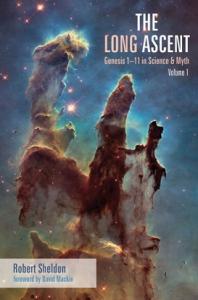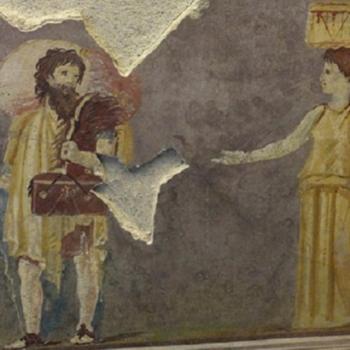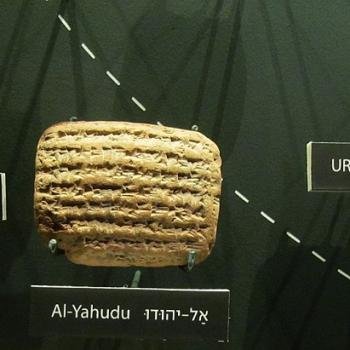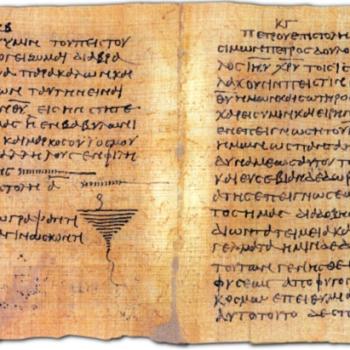A new fascinating study makes the connection between genetics and early Genesis. It finds Cro-Magnon and earlier forms of hominids in the Bible. It makes the connection between post-Ice-Age geology, rumors of Atlantis, and Noah’s flood. It even delves into epigenetics, the evidence that DNA can be rapidly impacted by adaptation to environment, as genes that are already present are switched on or off, according to need. The author proposes that speech may be what makes Adam’s race into a new creation that reflects the image of God, a change not traceable in DNA, but which can account for huge advances in human civilization.

The book is Robert Sheldon’s The Long Ascent (https://wipfandstock.com/the-long-ascent.html). Sheldon has a PhD in physics, and a Biblical degree from Westminster Theological Seminary. The “Long Ascent” of which Sheldon speaks is what he sees as the process of the human race rising above the epigenetic effects of sin. Cain’s murder injects violence into our DNA, which God partially extinguishes through the Flood, but it has been a long, slow climb to eliminate that violence ever since then.
Sheldon argues that Neanderthals and Australopithecines do not share our DNA, and therefore are not made in the image of God, while Cro-Magnons do share our DNA. Sheldon locates the creation of the latter in Genesis 1:26, approximately 50,000 years ago, while he puts the Genesis 2:7 creation of Adam in approximately 12,000 BCE. Why here? His reason is because here language appears, which is the key element of what it means to be made in the image of God. He suggests that the “divine breath” of Genesis 2:7 could be language. The ability to speak is acquired and passed on epigenetically, yet it does not show up in the DNA, only in the technological revolution that shows up in the archaeological record (reflected in Genesis 4).
“Be fruitful and multiply.” Sheldon says that while Neanderthals may have survived 250,000 years, their populations were always tiny (7,000-50,000), while when Cro-Magnon humanity arrives, the population jumps possibly a hundredfold. It was the Cro-Magnon human being who filled the earth from Africa to Patagonia with advanced hunting tools. Sheldon also reads Genesis 1:29 in the reverse from how most modern readers do; he sees here the dietary shift found in the fossil record from an exclusively meat diet to vegetables, starting with the gathering of grains. Neanderthals ate only large game that could be speared, and lived only in the north; Cro-Magnons were able to hunt anything, anywhere, plus they utilized plants in their diet.
Sheldon comments on Mesolithic stone monuments such as Stonehenge and Göbekli Tepe in Turkey. He dates them to the tenth millennium BCE, allowing for evidence of their reuse at later dates. He believes their original purpose was not worship, but as places where speech was taught. He takes them all as relics of an ancient Adamic empire that existed before the Flood.
This brings us to the Flood. Sheldon believes that Eden was created around 12,000 BCE, during the last Ice Age, in a Mediterranean basin that was substantially below sea level. The waters of the Atlantic are held back by the jammed Straits of Gibraltar, caused by a cataclysmic event, possibly the explosion of a meteor off the Carolina coast, for which there is evidence on both sides of the ocean. This blockage stops the Gulf Stream, plunging Europe into a deep freeze. All of civilized humanity descends into the warm Mediterranean basin. Eventually, the ocean rises high enough to overcome the barrier at Gibraltar, and the ocean pours in and obliterates the civilization in the basin – all but the few humans with whom God will repopulate the earth. Sheldon connects this scenario with the rumors of the Atlantis civilization retold by Plato, using geological research done by scholars who are seeking Atlantis rather than Noah. Sheldon reckons the date of this Flood to be around 9500 BCE.
In one of his forthcoming volumes (three are planned), Sheldon will develop his suggestions on the spread of our present human race, using clues from genetics and linguistics. He sees proto-Indo-Europeans, Cro-Magnon Basques, and proto-Uralic Asians all playing a role. In another forthcoming volume, he plans to give more detail on the rivers of Eden flowing into the empty Mediterranean basin, requiring a re-jiggering from the common understanding of four rivers that meet at the far southern end of Mesopotamia. Here I have yet to be convinced.
There is much more to absorb in Sheldon’s book. I do not necessarily agree with all that I have read in it, nor do I pretend to understand it all or even to explain it correctly to you, for which I hereby apologize to the author in advance wherever this may be true. Overall, I find it to be a valuable resource, and a welcome approach for those of us who strive to connect what God has written in the Hebrew Bible with what God has written into the wordless evidence buried in the earth concerning prehistoric times. Or as Sheldon puts it: “other accounts of Genesis, accounts written in flakes of stone, in coals from a hearth, or in genes extracted from bone.” This book is a keeper for those who struggle to plumb the meaning of early Genesis, in light of our available information from nature.















